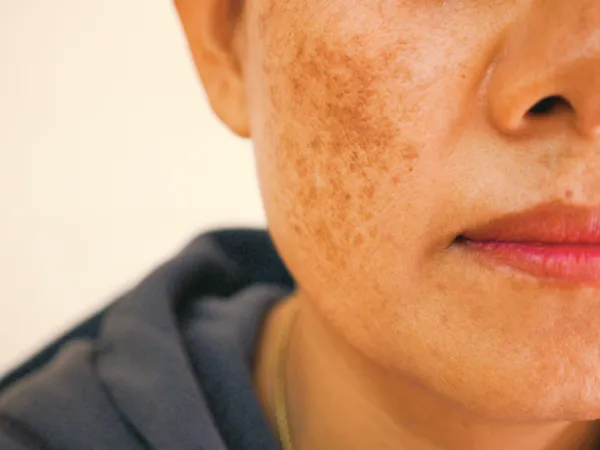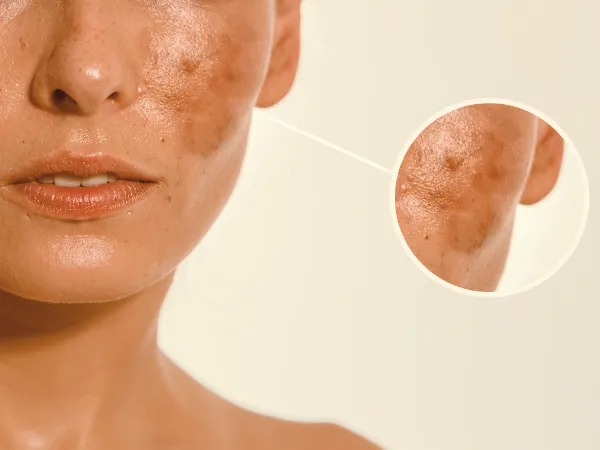Restore your skin's even tone
Melasma removal can be a challenge that requires patience and commitment on your part—but with the right approach, it is treatable.
At García-Legaz, we understand this skin condition and the importance of a comprehensive approach for effective treatment. That’s why we offer personalized solutions to help you regain an even skin tone and a blemish-free complexion.

A challenge with a solution
Melasma is a skin condition that primarily affects middle-aged women and appears as dark spots on areas exposed to the sun, such as:
While it does not pose a health risk, it can be a cosmetic concern. The main challenge lies in the fact that, without proper treatment and consistent maintenance, the hyperpigmentation tends to reappear.
What triggers it?
Melasma is a condition that is mainly triggered by sun exposure, as ultraviolet (UV) radiation stimulates melanin production, the pigment responsible for skin color.
However, hormonal fluctuations—such as those that occur during pregnancy, with the use of oral contraceptives, or hormone therapy—also play a significant role in its development. Additionally, genetic predisposition can increase one’s vulnerability to developing melasma.

A precise diagnosis
At Instituto Dermatológico García-Legaz, we know that determining the most appropriate treatment requires a diagnosis that identifies the type and depth of the melasma.
There are three main types of melasma:
Skin Renewal
Depending on the specific type of melasma you have, the therapeutic strategy may vary.
Some of the most commonly used treatments for melasma removal include:
Through chemical and physical exfoliants, we achieve a gradual thinning of the superficial layers of the skin, progressively eliminating melasma.
Additionally, when combined with the use of retinoids, which stimulate cellular renewal, results become even more effective.
Another treatment for melasma includes topical depigmenting agents. These treatments are adjusted according to the intensity of the melasma and your skin’s response, requiring follow-up by your dermatologist.
In more resistant cases, we use low-concentration tranexamic acid, which inhibits melanin overproduction, reducing the appearance of dark spots. This component can be applied topically or taken orally.
We use the Nordlys platform, a state-of-the-art laser device that can improve the vascular component sometimes associated with melasma.
These technologies help reduce the intensity of dark spots while significantly improving skin texture.
Frequently Asked Questions
Still have questions?
We've got the answers.
Rather than eliminating melasma, we must learn to manage it.
The time needed to control melasma varies depending on its intensity and the type of treatment, and it may take several months to a year. Factors such as the depth of the melasma, your skin’s response to treatment, and your consistency with daily care all affect the results.
Since it is a chronic condition, following a maintenance treatment is essential to prevent recurrence.
To determine whether a spot is melasma, it’s important to observe some common characteristics and consult a dermatologist.
Common signs of melasma include:
Location: Appears in sun-exposed areas (cheeks, forehead, bridge of the nose, and upper lip).
Color: May present various shades of brown or gray.
Shape: Usually has irregular or diffuse edges, although it may be more defined in some cases.
Size and shape: Spots vary in size and can cover a significant area of skin.
Melasma and sunspots differ mainly in their causes and characteristics.
Melasma, commonly associated with hormonal factors and sun exposure, usually appears in symmetrical areas of the face, such as the cheeks and upper lip, with diffuse borders.
In contrast, sunspots are caused by accumulated sun exposure over time and typically have more defined borders, appearing in sun-exposed areas like the face, hands, or chest—especially in individuals over 40 years old.